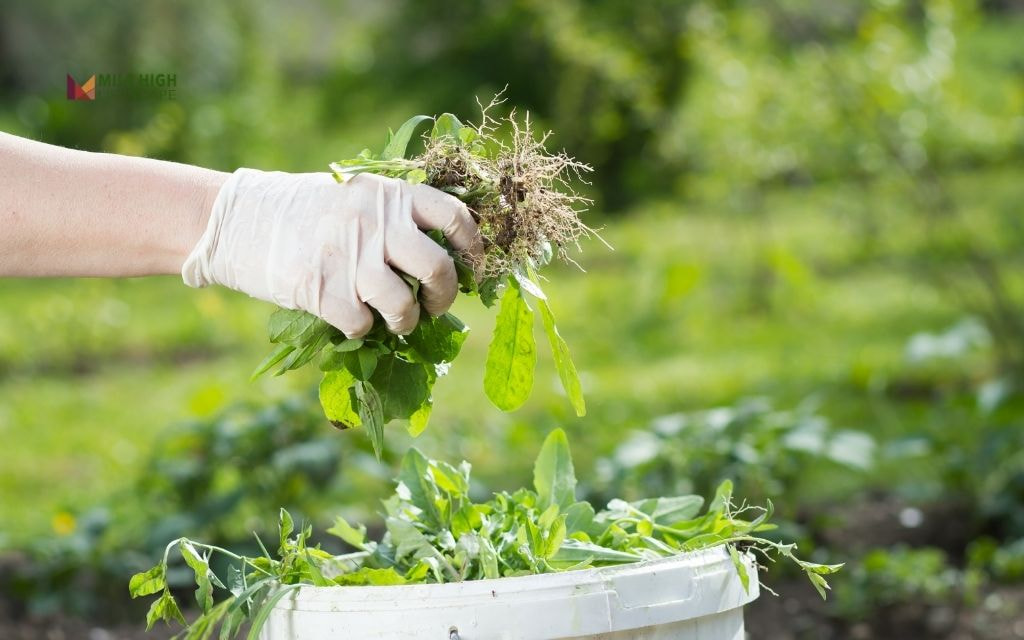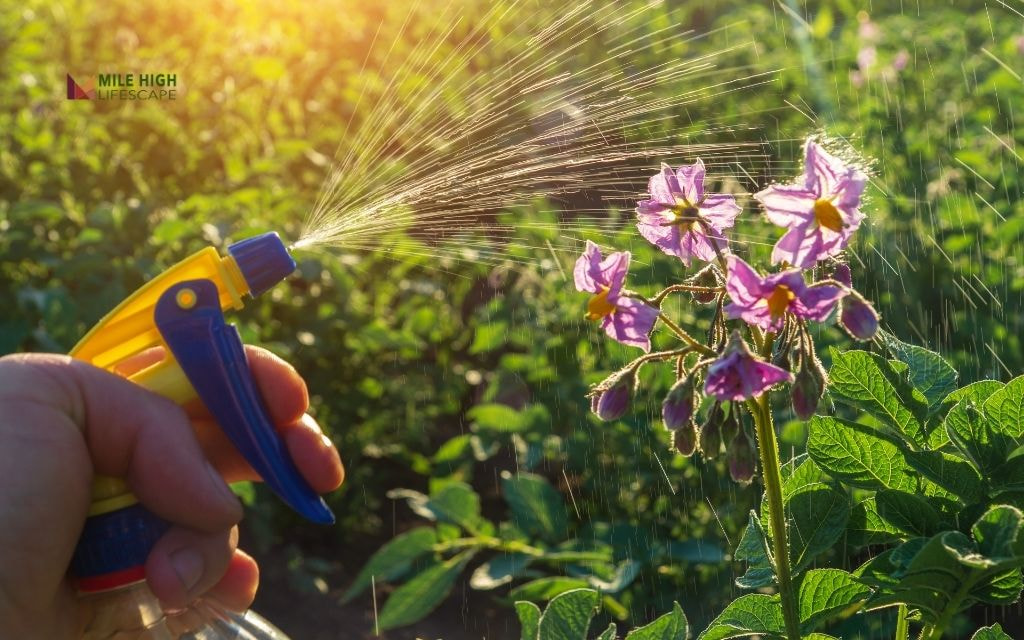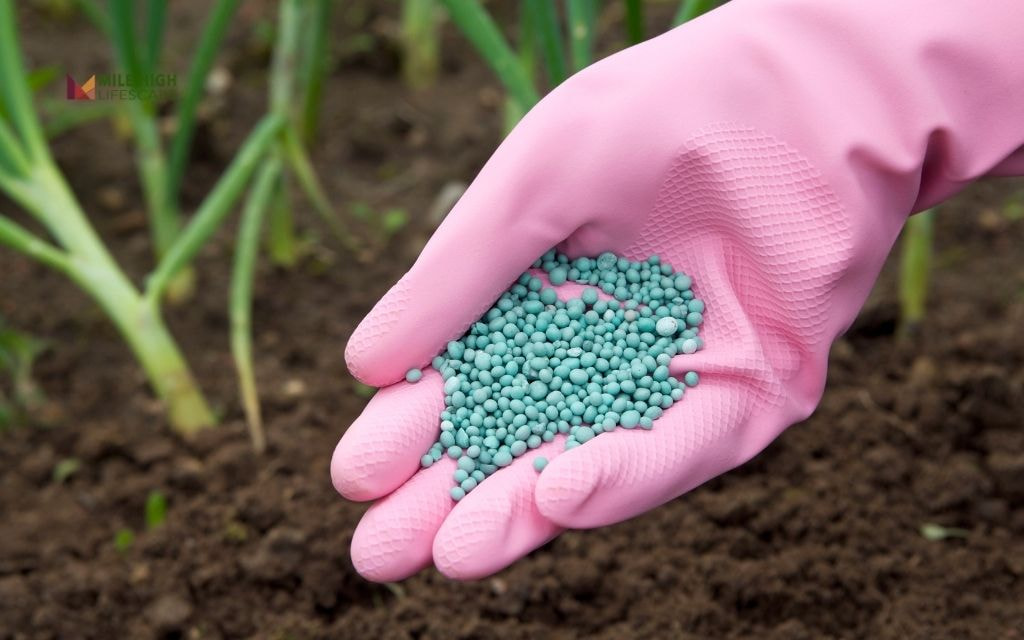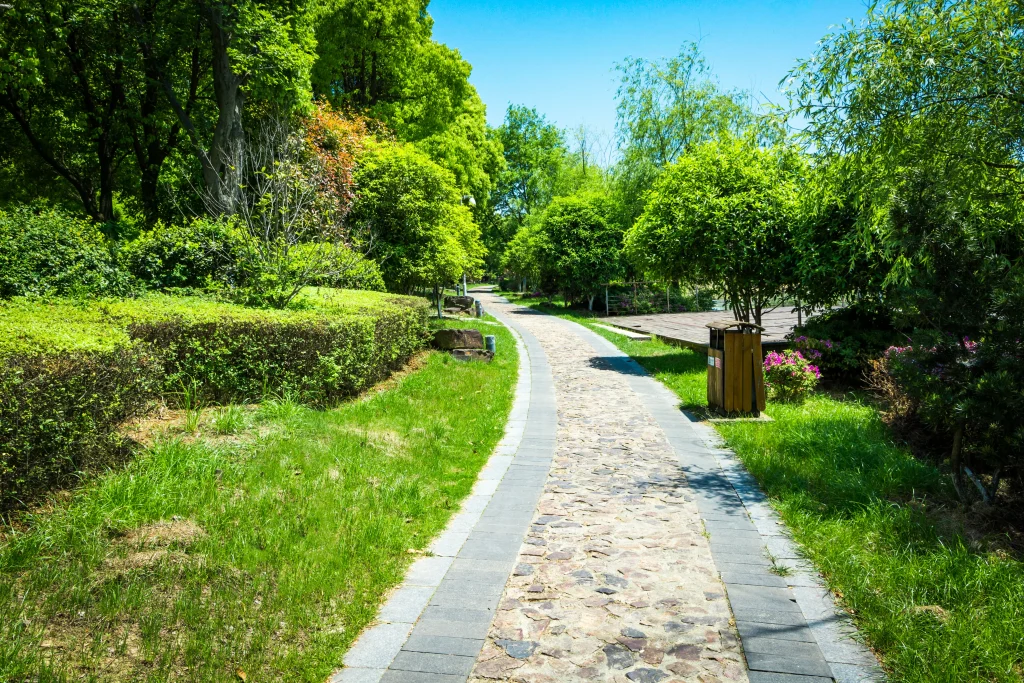Grass invasion in flower beds creates one of the most frustrating challenges gardeners face. These unwanted intruders steal nutrients from your flowers while disrupting the visual harmony you’ve worked to create.
So, how to get rid of grass in flower beds? The solution lies in selecting the right removal technique based on your garden’s specific needs. Small grass patches respond well to hand removal, while extensive invasions require smothering methods or targeted treatments.
With proper technique and persistence, you can eliminate grass and restore your flower beds to their intended beauty.
How to get rid of grass in flower beds
Success depends on matching your removal method to the grass problem’s scope, your garden’s size, and your preferred gardening approach. Each method delivers distinct benefits under the right circumstances.
1. Hand removal method
Hand removal provides the most accurate and eco-friendly solution for grass elimination. This method works exceptionally well for small invasions or precise removal around delicate plants.
- Begin by moistening the soil lightly. Wet soil releases grass roots more easily than dry, compacted earth. Use a sharp garden spade or weeding tool to loosen soil around each grass cluster, starting from the outer edges.
- Grasp each grass clump at its base and pull with steady pressure. Complete root extraction is crucial because even small root pieces can regrow into new grass plants.
- Examine extracted roots carefully. Healthy grass roots display white or cream coloring and may extend several inches underground. Remove every visible root fragment to prevent regrowth.
- Fill empty spaces with quality compost or potting soil. Press gently to eliminate air gaps that could harbor future weed seeds.

2. Cardboard smothering technique
The cardboard smothering method eliminates grass by cutting off sunlight and oxygen while enriching your soil through decomposition. This approach proves ideal for larger areas where hand removal becomes impractical.
- Cut existing grass to its shortest possible length using shears or a mower. Short grass decomposes faster and creates less bulk under the covering.
- Place overlapping cardboard sheets across the entire grass area. Newspaper layers work as an alternative, but require greater thickness for effectiveness. Ensure complete coverage with no light gaps.
- Saturate the cardboard thoroughly with water. Wet materials decompose faster and resist wind displacement. The moisture also begins the smothering process immediately.
- Spread 3-4 inches of organic matter over the cardboard. Wood chips, shredded bark, straw, or finished compost all work effectively. This layer provides weight to hold everything in place while creating an attractive appearance.
- Grass elimination typically requires 6-8 weeks, though persistent varieties may need up to three months for complete death.
3. Solar heat treatment
Solarization uses concentrated solar energy to create lethal temperatures for grass while preserving soil health. This chemical-free method works best during peak summer heat.
- Saturate the grass-covered area until water penetrates deep into the soil. Moist soil conducts and retains heat more effectively than dry soil.
- Cover the entire space with clear plastic sheeting. Ensure the plastic lies flat against the soil surface without air gaps that reduce heating efficiency.
- Secure plastic edges by burying them several inches deep or weighing them with stones. Proper sealing creates the greenhouse effect necessary for grass elimination.
- The plastic covering raises soil temperatures to 110-125°F, killing grass roots, seeds, and harmful soil organisms. Treatment requires four to six weeks of consistent hot weather for complete effectiveness.
4. Herbicide solutions
Herbicide treatments deliver rapid results but demand careful application to protect surrounding plants. Both natural and synthetic options accommodate different gardening philosophies.
Natural herbicide options
Twenty percent acetic acid vinegar burns grass leaves and stems on contact. Apply during sunny conditions when temperatures exceed 70°F for maximum effectiveness.
Boiling water destroys grass tissue instantly. Pour slowly and evenly to ensure complete coverage of grass areas.
Salt water kills grass but uses sparingly. Excess salt damages soil structure and affects future plant growth. Mix one part salt with three parts water for balanced application.
Chemical herbicide options
Glyphosate-based products provide systemic grass control by disrupting protein production. These herbicides require seven to fourteen days for complete results but eliminate grass entirely, including root systems.
Apply using foam brushes or precise sprayers to minimize contact with desirable plants. Follow label directions exactly for safe and effective results.

Problems caused by grass in flower beds
Understanding grass-related problems helps you appreciate thorough removal and prevention efforts.
Resource competition
Grass develops aggressive, fibrous root systems that rapidly absorb available moisture and nutrients. These dense root networks often overwhelm flower plant roots, which typically grow in different patterns with varying nutrient needs.
Established grass causes flower plants to display stress symptoms including reduced blooming, leaf yellowing, and stunted development. Your investment in quality flowers suffers when grass monopolizes essential resources.
Visual and maintenance issues
Grass among flowers creates disorder that undermines your garden’s design impact. The stark contrast between grass’s uniform appearance and flowers’ diverse colors and textures produces visual confusion rather than intentional beauty.
Grass also demands constant attention and removal efforts. Initial scattered blades multiply rapidly throughout the bed, creating ongoing maintenance that consumes time better spent on garden improvements.
Soil structure problems
Mature grass forms thick root mats that physically displace flower roots while creating compacted growing conditions. These dense mats prevent proper water penetration and air circulation.
Progressive compaction reduces soil pore spaces that plant roots require for healthy growth. The environment becomes increasingly favorable to grass while growing hostile to most flowering plants.
Soil restoration after grass removal
Proper soil preparation following grass elimination ensures optimal growing conditions for new flower plantings.
Soil aeration and loosening
Grass removal often leaves compacted soil that needs rehabilitation before planting. Use a garden fork or mechanical aerator to create holes throughout the bed, breaking compacted layers and improving soil structure.
Work when soil contains optimal moisture – damp but not waterlogged. Focus extra attention on areas where grass root mats were thickest, as these zones show the most severe compaction.
Create loose, workable soil structure that allows easy root penetration and water movement.

Organic matter addition
Quality compost transforms depleted soil into a thriving growing medium for flowers. Apply two to three inches of well-aged compost over the entire bed, then incorporate it into the top six inches of soil.
Compost provides slow-release nutrients, improves water retention in sandy soils, and enhances drainage in clay soils. It introduces beneficial microorganisms that support plant health and create natural disease resistance.
Aged manure, leaf mold, or shredded bark serve as alternative organic materials. Each provides unique benefits while improving soil structure and fertility.
Prevention strategies for long-term protection
Prevention requires less effort than repeated grass removal. These strategies create lasting protection for your flower beds.
Physical barrier installation
Install edging materials that extend at least four inches below ground to block grass runners and rhizomes. Physical barriers provide the most reliable long-term grass prevention.
Metal edging offers durability and clean lines but may require professional installation. Stone or brick edging adds decorative appeal while serving as effective barriers. Plastic edging costs less but may become brittle and require eventual replacement.
Mulching and maintenance
Maintain consistent three to four-inch mulch layers throughout flower beds. Fresh mulch suppresses grass seed germination while retaining soil moisture and regulating temperature.
Organic mulches like shredded bark decompose gradually, requiring annual replenishment. Consider landscape fabric beneath mulch in areas with persistent grass problems for additional barrier protection.
Strategic watering and planting
Develop watering practices that favor flowers over grass. Deep, infrequent watering encourages flower roots to grow deeply while discouraging shallow-rooted grass.
Apply water directly to plant root zones using soaker hoses or drip irrigation rather than overhead sprinklers that promote grass growth.
Select flowers that naturally outcompete grass through vigorous growth or chemical inhibition. Dense groundcover flowers create living mulch that suppresses grass germination while spreading habits quickly fill available space.
Conclusion
Successfully removing grass from flower beds requires matching the right method to your specific situation and implementing proper prevention strategies.
Manual removal works excellently for small areas, while sheet mulching handles larger spaces effectively. Solarization provides chemical-free control, and targeted herbicide applications deliver quick results when applied correctly.
Lasting success combines effective removal with solid prevention through proper edging, consistent mulching, and strategic plant selection. The right approach transforms grass-infested areas into thriving garden showcases.
For nearly two decades, Mile High Lifescape has been proudly serving the Denver Metro area as the go-to landscape company. With a reputation for excellence, we offer a comprehensive range of friendly and professional landscaping and flower bed services.
Count on us to transform your outdoor space into a beautiful oasis that exceeds your expectations.
Frequently asked questions (FAQs)
How can I tell if all grass has been removed from my flower bed?
Complete grass elimination becomes apparent when no green grass blades emerge after two to three weeks of observation. Examine soil by gently digging small areas – living grass shows white or cream-colored roots requiring additional removal.
What prevents grass from returning to my flower bed most effectively?
Install physical barriers at least four inches deep, maintain consistent mulch coverage, and establish dense flower plantings that outcompete grass. Regular monitoring and immediate removal of new grass growth prevents re-establishment.
Does mulch alone eliminate grass in flower beds?
Mulch alone rarely kills established grass but prevents new seed germination. For grass elimination, use cardboard beneath mulch to block sunlight and smother existing grass effectively.
How long does solar treatment take to kill grass?
Solar treatment requires 4-6 weeks of continuous hot weather for effective grass elimination. Soil temperatures must reach 110-125°F for extended periods. Cooler weather or partial shade extends required treatment time.
What organic methods work for grass removal in flower beds?
Hand removal, cardboard smothering, solar treatment, and natural herbicides like vinegar or boiling water provide effective organic grass control. These methods require more time and effort than chemical solutions but maintain organic gardening principles.
